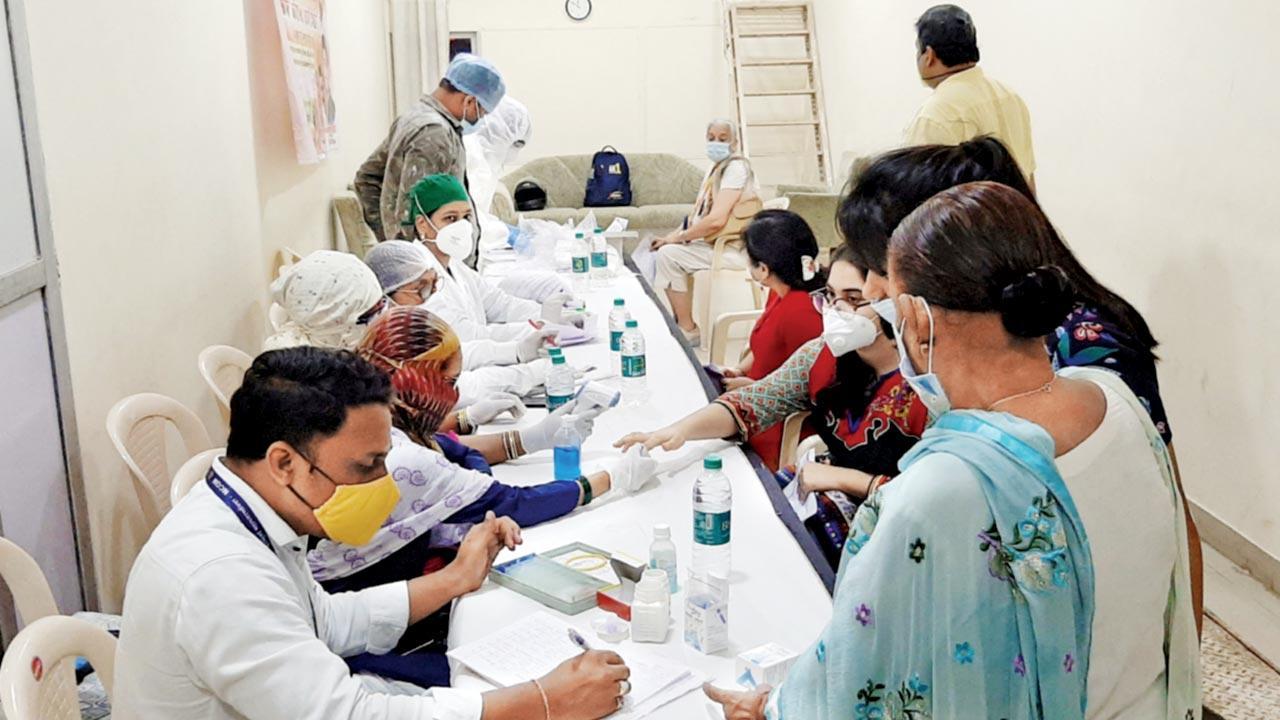From Dec 15 to 20, the city registered 1,962 cases with an average of 280 infections daily; Mumbai has recorded 21 Omicron case so far

Residents of Neptune Society get tested for COVID at an antigen testing camp, at Thakur Village, Kandivli, in September last year. File pic
With daily COVID cases on the rise in the city and more Omicron infections coming to the fore, Brihanmumbai Municipal Corporation (BMC) data has revealed that most of them are from high-rises, just the way it was during the initial days of the first wave. While the latter part of the first wave saw more cases in the slums, the second wave affected mainly the non-slum areas.
ADVERTISEMENT
Currently, the state has 65 Omicron cases, out of which 21 are from Mumbai. The COVID cases have been on the rise since last week. From December 15 to 20, the city registered 1,962 cases with an average of 280 cases daily. In the first half of the month, the city saw an average of 201 cases daily. On Wednesday, the city registered 490 cases.
The wards that have a higher number of high-rises are showing a rise in cases. A ward (Fort, Nariman Point, Colaba), D ward (Malabar Hill, Kemps Corner), G South ward (Parel, Worli), H West ward (Bandra West, Khar West), K West ward (Andheri West) are the top five ones that have registered a higher growth rate between December 14 and 19. In wards like P North (Malad) and L (Kurla-Chembur), where 80 per cent of the population stays in slums, cases have not been increasing.
Speaking to mid-day, Dr Prajakta Amberkar, medical officer of A ward, said, “Cases are increasing, but more than 90 per cent of them are from high-rises.” Sanjay Funde, medical officer of H West ward said most of the cases were from the luxury apartments and hardly 5 per cent was from slums.
“Even during the first wave, initially most of the cases were coming from high-rises as people were returning from abroad. After that the infection spread to the slums. In the second wave, 90 per cent of the cases were from non-slum areas. The trend continued even after cases hit a low,” said a BMC official.
In the third sero-survey conducted for all age groups in March, it was found that sero-positivity against COVID had increased in non-slum areas and decreased in slum areas. In the one conducted in August, over 87 per cent of the population was found to have antibodies and there wasn’t much difference between the slum and non-slum areas. Till now, there have been fewer cases in slums. Not a single slum has been declared as a containment zone as against 17 sealed buildings and 812 sealed floors across the city.
5 per cent
Portion of the cases that are from slum areas
 Subscribe today by clicking the link and stay updated with the latest news!" Click here!
Subscribe today by clicking the link and stay updated with the latest news!" Click here!







